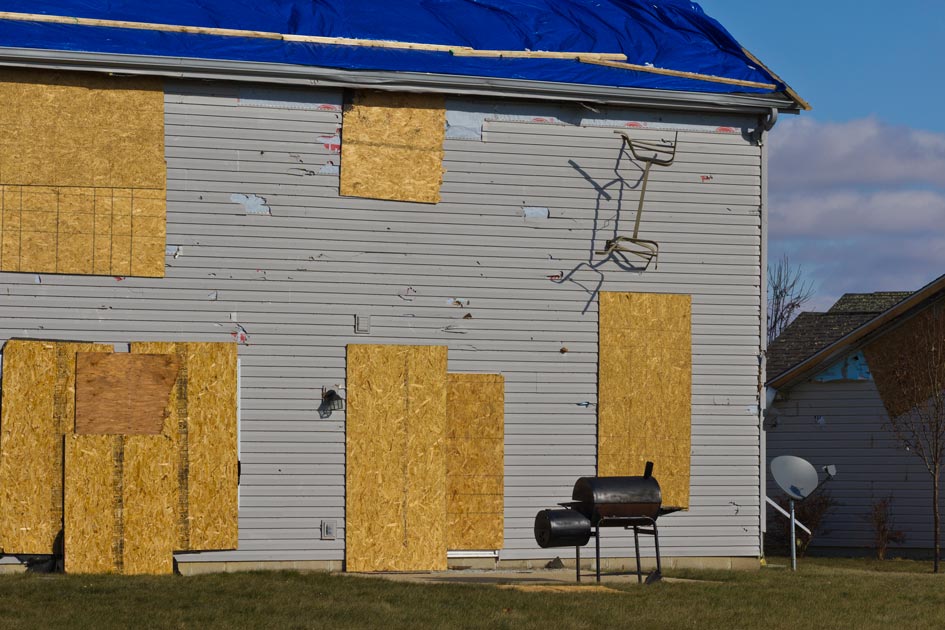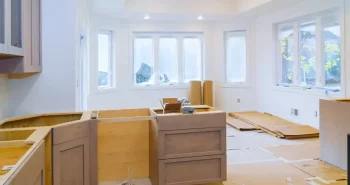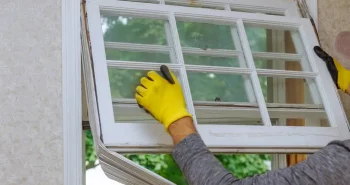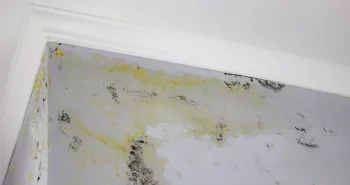Weather is often unpredictable, and storms seem to be getting stronger as the years pass by. While your home’s siding works to protect your foundation, structural integrity, and family members, it’s not invincible. To make sure you’re properly caring for your home’s exterior, it’s important to perform an inspection and take the necessary action to deal with storm-damaged siding. To help, consider the following steps for handling damage.
5 Steps to Deal with Siding Damage After a Storm
Extreme weather can wreak havoc on your home, especially when it comes to roofing and siding. While siding can last for years when properly maintained, the older it is the more susceptible to damage it becomes. Once the storm passes, make sure that you deal with any damage in a timely manner to reduce the risk of further issues.
1. Assess the Damage
The first thing you should do after a storm is assess the damage that your siding has endured. While giving your siding a once over every season is recommended for ongoing care, take your time performing a visual inspection from the ground. Walk around the perimeter of your home and look for any of the following indications of damage.
- Cracking – any signs of splitting or cracking siding is an indication of damage. Even if they seem minor, cracks require the attention of a professional to reduce the risk of spreading. This is especially true if the cracks are running parallel, as these can increase your risk for water damage when left unrepaired.
- Chipping –indications that pieces of your siding have been chipped off will require repair. While small chips may seem minor, these areas can quickly spread and lead to expensive repairs. If you see any signs of chips, especially near the bottom of a panel, call a professional for a more detailed inspection.
- Holes – holes are just as serious, if not more so, than chipped and cracked siding. A hole creates an entry point for water, pests, and larger rodents. This can lead to even more serious problems that can affect your insulation and home’s interior. At the first sign of any holes in your siding, call to schedule a repair.
- Peeling – while paint peeling can seem minor when compared to other types of damage, it could indicate unseen water leaks. This is especially true if the paint peels off without breaking, as if it were still wet or damp. Chipping paint is natural with time and sun exposure, but you should undergo an inspection if it can be easily peeled away in large strips.
- Dents – depending on the severity of the storm and wind speed, debris from your yard could have been picked up and hurled against your home. This will be most apparent in the form of dents or dings. While these signs of damage might not lead to immediate issues, they can contribute to rust or cracks over time.
- Displacement – if wind speeds reach a certain point, parts of your siding may be completely ripped off and displaced across your yard. If this occurs, call your siding contractor as soon as possible to schedule replacements.
2. Undergo a Professional Inspection
While most signs of damage will require a follow-up inspection by a professional, you should still have one performed if the storm was severe and there’s debris in your yard. A professional will be able to assess your siding and notice things the untrained eye might miss, which is essential to reducing complications. You should also never get on your roof to try and get a better visual of roofing or siding damage. Leave that up to a professional who’s trained in performing safe visual inspections.
3. Speak to Your Insurance Provider
Luckily, if you have homeowner’s insurance, most policies extend coverage to storm damage. Contact your insurance agent as soon as possible to begin the process of filing a claim. You can use an independent contractor before contacting them to streamline the process, or you can wait until after you’ve notified them. Just make sure to do this in a timely manner to adhere to your policy’s requirements. You should also be beware that some insurance providers will send their own professionals to perform inspections. While this shouldn’t make a difference, you may want to have your own inspection done independently to ensure that all of the damage is addressed and you’re getting the most out of your insurance coverage.
4. Get Siding Repairs as Soon as Possible
Assessing and repairing storm damage to your siding should happen as soon as possible. This is especially important during temperamental seasons, as a follow up storm that hits your home before repairs are made can exponentially worsen damage. Even though it may be inconvenient for your schedule, try to get the logistics of storm assessment and inspections done as soon as possible. In fact, calling a contractor either the same day or at the start of business hours the following day is recommended. After the inspection is made, be prepared to move forward with repairs as soon as possible to reduce your risk of further damage.
5. Replace Siding if Beyond Repair
If your home’s siding is beyond repair, look into your options for siding replacement. This may or may not be covered by your insurance provider, but if it’s recommended by a professional it’s best to heed their advice. You can use this as an opportunity to give your home’s exterior a facelift and change the style, or you can replace the siding with the same material and color as before. In either instance, you’ll improve your home’s overall aesthetics, boost the property value, and add a strong layer of protection against further storm damage.
Other Areas to Look for Damage
Your siding isn’t the only feature of your home that’s susceptible to damage during a storm. While making your inspection, it’s also crucial to give your roof, driveway, gutter system, landscaping, windows, and doors attention.
- Roofing – never get on top of your roof after a storm, as damage could jeopardize its structural integrity. Instead, make a visual inspection of your roof from the ground. Look for any signs of shingle damage, cracks, leaks, missing shingles, unsecure flashing, or damaged drainage system. Undergoing a professional roofing inspection can be done at the same time as your siding inspection, so find a company that excels in both.
- Driveway – while you might not think your driveway is an important part of your home to inspect, concrete is susceptible to damage over time. If you see any signs of cracks or splits, you may want to consider resealing your driveway or updating your sealant to reduce water damage.
- Landscaping – one way to tell that there’s been a strong storm is to assess your landscaping. Since most trees, flowers, bushes, and shrubbery are fragile when compared to concrete structures, this will give you a better idea of the strength of the storm and the possibility of severe damage. Keeping things trimmed will also help ensure that further damage to your home’s exterior is kept to a minimum.
- Windows – while extensively cracked or shattered glass will be obvious after a storm, you may not notice subtle changes to the seals or cracks near the edges. Take the time to inspect your windows for any signs of a draft or subtle damage so they can be reinforced properly to lower the risk of future damage.
Most storms that occur in neighborhoods are nothing to worry about, but what may seem like a gentle thunderstorm to those inside can be accompanied by strong gusts of wind that lead to subtle damage. To help keep your home’s exterior strong, regardless of the season, contact the professionals at First Star Exteriors to perform a thorough inspection of your home’s siding and roofing. If there are any signs of damage, First Star Exterior provides competitive rates with full transparency. We pride ourselves on our hands-on, personable partnerships and always work to meet the goals of our clients. If you’re looking for an expert siding company that you can trust, look no further than First Star Exteriors. We offer fast turnarounds for quotes and services to make sure your needs are addressed in a timely manner. Contact us today to schedule an inspection or receive a free quote within 48 hours.





